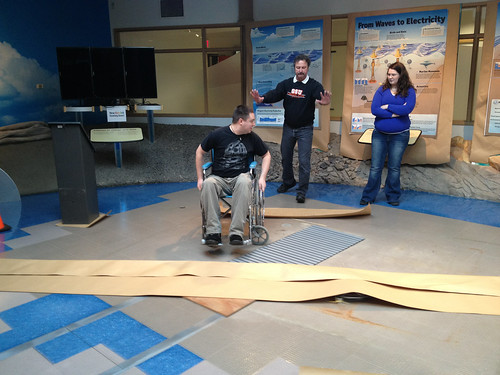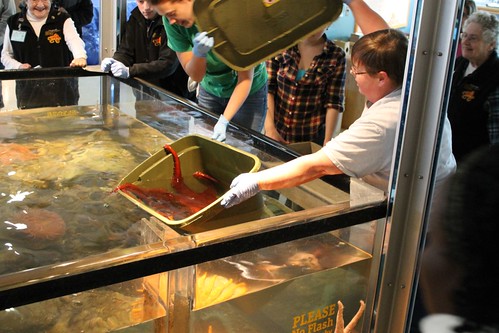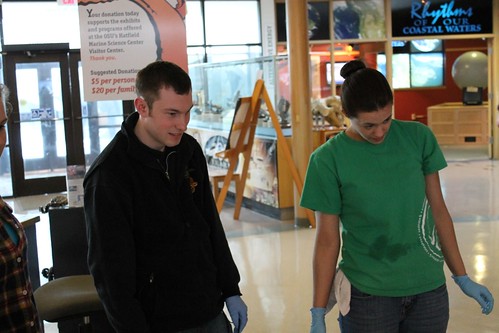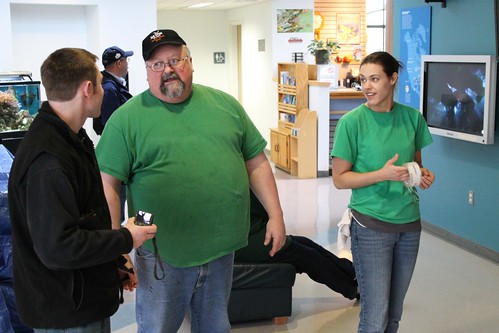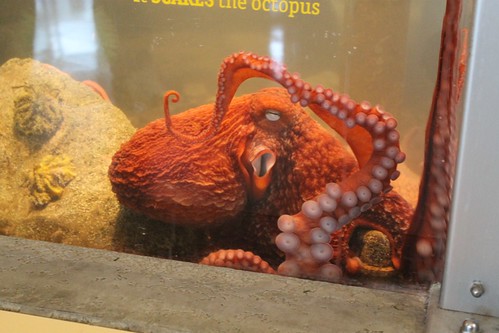No, it’s not the George Clooney movie sequel. It’s a chance for us to blog near-real-time about our experiences at getting the word out about what we do to the scientists we’re trying to work with. Several of the lab members are attending the Oceans 2012 meeting in Salt Lake City this week. The meeting is a joint offering of The Oceanography Society, Americal Geophysical Union, and the Association for the Sciences of Limnology and Oceanography.
The meeting is a typical science conference: many many many presentations in all sorts of subdisciplines of ocean sciences, and about one session on education, outreach, communication, evaluation, and student engagement. So, we still have an uphill battle to reach those folks who need to do “broader impacts” for their grants or just as part of the greater good. That is, like recycling, there isn’t always a personal gain, but when you consider the bigger picture, the argument is that it’s the right thing to do (thanks, Jude).
In listening to the first set of education and evlauation presentations this morning, it struck me that the evaluations almost all noted that the majority of their participants in delivering outreach were graduate students. The good news is, the graduate students were very enthusiastic about the programs and found it rewarding both by learning new ways of doing teaching and outreach and also by improving their own research at some times. This bodes well for exciting this new generation of scientists to get involved in outreach.
The bad news, though, is by and large, the practicing scientists were still missing. Are they thinking that their grad students will “take care of it” for them? Do they still find it a hassle, unrewarding, time-consuming, and an activity that basically takes away from their own research? Are they afraid of kids? Have they tried it and had a bad response (probably because they got little guidance on how to do it in the first place)? This is a large cadre of professionals that we can’t afford to ignore, no matter how excited the next generation is. We can’t let them, or ourselves as outreach and education professionals and researchers, cop out.
So, the question remains, how do we reach this population? I’m hoping to talk up our program and work as the week progresses, but this venue is challenging, to say the least, with only a few general mixers and the sheer number of simultaneous presentations.
Dare we hope in 2014 for a plenary talk about education and outreach for *all* scientists? Or educational presentations that aren’t competing with the scientific ones? Or scientists that start to attend education and outreach conferences? A woman can dream …

